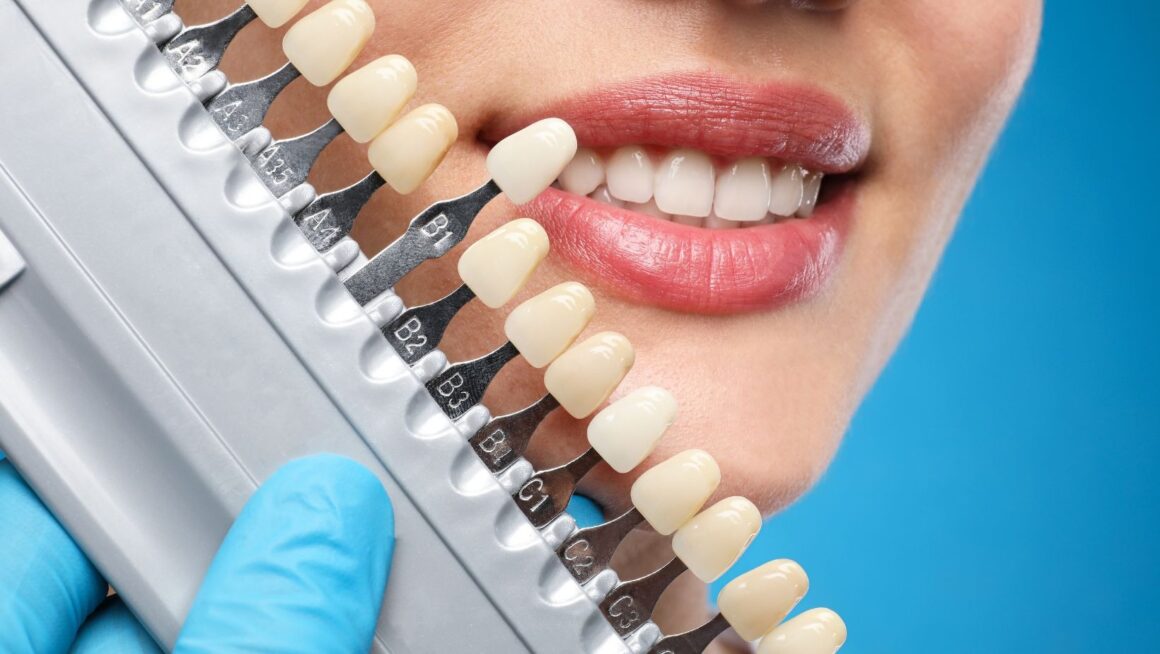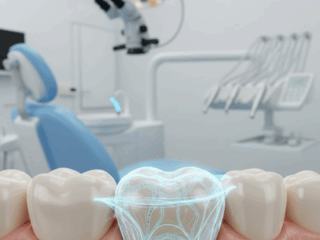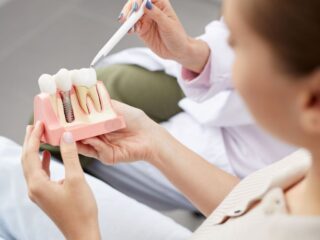
When it comes to restoring teeth, traditional methods often focus on the end result—replacing what’s missing or damaged. But what if there was a way to restore teeth while preserving more of their natural structure? Enter biomimetic dentistry, an innovative approach that prioritizes both the aesthetic and functional preservation of your teeth. This type of dentistry is revolutionizing how restorative procedures are performed, and it’s especially relevant for patients in Colorado Springs who are seeking durable, less invasive dental solutions.
In this article, we’ll explore the science behind biomimetic dentistry, how it differs from traditional restorative methods, and why it’s particularly beneficial for Colorado Springs residents looking for long-term dental health.
What is Biomimetic Dentistry?
Biomimetic dentistry is a modern approach to dental restoration that focuses on mimicking the natural properties of your teeth. Unlike traditional restorative methods, which often involve removing a significant amount of healthy tooth structure, biomimetic dentistry aims to preserve as much of the natural tooth as possible. This technique uses advanced materials that closely resemble the composition and strength of natural teeth, providing both aesthetic and functional benefits.
At its core, biomimetic dentistry is about more than just repairing damage—it’s about preserving the integrity of your teeth for the long term. By using minimally invasive techniques and durable materials, this approach ensures that your natural tooth structure remains intact for as long as possible.
The Science Behind Biomimetic Dentistry
Biomimetic dentistry is rooted in the principles of bioengineering, where the goal is to replicate the natural structure of a tooth. The materials used in biomimetic procedures are carefully selected to match the physical properties of natural tooth enamel and dentin. These materials are designed to bond more securely to the tooth, reducing the need for extensive drilling or removal of healthy tooth tissue.
The science behind biomimetic dentistry also focuses on how the materials interact with the tooth. For instance, they expand and contract in sync with the natural tooth, which helps reduce stress on the tooth and increases the longevity of the restoration. By mimicking the tooth’s natural structure, biomimetic dentistry ensures that the restoration behaves in a way that supports long-term oral health.
How It Mimics Natural Tooth Structure
Biomimetic restorations are designed to closely resemble the structure and function of natural teeth. In traditional restorative procedures, fillings or crowns are often used to replace lost or damaged parts of a tooth. However, these traditional methods may not replicate the natural function of the tooth and can sometimes lead to further stress and damage over time.
Biomimetic dentistry, on the other hand, uses specialized materials that not only match the appearance of natural teeth but also mirror their mechanical properties. For example, biomimetic fillings are bonded to the tooth structure, which creates a stronger, more durable restoration that behaves like a natural tooth. These materials also allow for better light reflection, making the restoration virtually indistinguishable from natural teeth.
By focusing on preserving the natural tooth structure, biomimetic dentistry helps ensure the tooth remains functional and durable for years to come.
How Biomimetic Dentistry Differs from Traditional Restorative Dentistry
While traditional restorative dentistry focuses on fixing a tooth after it’s damaged, often removing large portions of the natural structure to accommodate a filling or crown, biomimetic dentistry prioritizes preserving as much of the natural tooth as possible. This approach uses modern, advanced materials that bond to the tooth, eliminating the need for large-scale tooth preparation and reducing the amount of healthy tissue removed.
Materials Used in Biomimetic Dentistry
The materials used in biomimetic dentistry are a key factor in its success. These materials are specifically designed to match the natural properties of teeth, such as their ability to withstand pressure and their flexibility. Common biomimetic materials include:
- Resilon: A thermoplastic root canal filling material that mimics the natural properties of tooth dentin.
- Composite resins: These are tooth-colored materials that can be shaped to match the natural contours of the tooth and are bonded directly to the tooth’s surface.
- Ceramics: Biomimetic ceramics are designed to mimic the natural structure of enamel, providing both durability and aesthetics for dental crowns or veneers.
By using these advanced materials, biomimetic dentistry helps create restorations that function in a way that closely mirrors the natural properties of the tooth, ensuring better performance and longevity.
Advantages Over Conventional Methods
One of the primary advantages of biomimetic dentistry Colorado Springs over traditional restorative methods is its emphasis on preserving the natural tooth structure. This not only results in a more aesthetically pleasing restoration but also contributes to the long-term health of your teeth.
- Less invasive: Traditional fillings and crowns often require significant tooth structure removal. Biomimetic dentistry, however, uses minimal tooth preparation, which helps maintain the integrity of the tooth and reduces the risk of future complications.
- Stronger restorations: Biomimetic materials bond more effectively to the tooth, reducing the likelihood of failure or breakage.
- Long-term durability: Because biomimetic restorations mimic the natural structure of teeth, they can last longer and resist wear and tear better than traditional restorations.
These advantages make biomimetic dentistry a superior choice for those looking for a natural, long-lasting solution to dental issues.
Benefits of Biomimetic Dentistry for Colorado Springs Residents
Biomimetic dentistry is especially beneficial for residents of Colorado Springs, where the dry climate and active outdoor lifestyle can have an impact on oral health. Here’s why this approach is perfect for the local population:
Long-Term Health and Durability
Colorado Springs residents, who are often exposed to outdoor elements and dry air, can benefit from the durability and longevity of biomimetic restorations. Because these restorations closely mimic the natural structure of the tooth, they are more resistant to wear and tear. This means they can handle the stresses placed on them by daily activities, such as eating and drinking, as well as the environmental factors unique to Colorado Springs.
Additionally, biomimetic restorations are designed to last longer than traditional fillings or crowns, meaning that Colorado Springs residents can enjoy better long-term oral health without the need for frequent repairs or replacements.
Preserving Tooth Integrity with Less Invasive Techniques
The dry, high-altitude climate in Colorado Springs can lead to certain oral health challenges, including dry mouth, which increases the risk of cavities and tooth decay. By opting for biomimetic procedures, residents can protect their teeth with less invasive methods that preserve more of the natural tooth structure. These techniques reduce the risk of further damage, ensuring that your teeth stay healthy and functional for years to come.

The less invasive nature of biomimetic procedures is particularly beneficial for those who want to minimize the long-term effects of dental work. By preserving the natural tooth structure, biomimetic dentistry can help maintain the tooth’s strength and integrity over time.
What to Expect During a Biomimetic Procedure
If you’re considering biomimetic dentistry, it’s helpful to know what to expect during the procedure. The process is typically straightforward, and because it’s less invasive than traditional restorations, recovery time is often quicker.
Step-by-Step Process
- Consultation: The first step is a consultation with a Colorado Springs dentist who is trained in biomimetic techniques. During this visit, the dentist will assess your oral health and discuss the best options for your needs.
- Tooth Preparation: If necessary, the dentist will prepare the tooth by removing any decay or damaged portions. However, much less tooth structure is removed compared to traditional restorations.
- Material Application: The dentist will apply biomimetic materials, such as composite resins or ceramics, to the prepared area. These materials are carefully shaped and bonded to the tooth, mimicking its natural structure.
- Curing: The materials are cured (hardened) using a special light, ensuring they are securely bonded to the tooth.
- Polishing and Shaping: Finally, the restoration is polished to match the natural contours and appearance of your tooth, providing a seamless, natural look.
Recovery and Aftercare
Because biomimetic procedures are less invasive, recovery time is typically minimal. You may experience some sensitivity after the procedure, but this usually subsides within a few days. Your dentist will provide specific aftercare instructions, including recommendations for avoiding certain foods or habits while your restoration fully sets.
Why Choose a Colorado Springs Cosmetic Dentist for Biomimetic Procedures?
Colorado Springs is home to several skilled cosmetic dentists who specialize in biomimetic dentistry. Choosing a local expert ensures that you’re receiving cutting-edge care that’s tailored to the unique needs of Colorado Springs residents.
Expertise and Cutting-Edge Techniques in Colorado Springs
Colorado Springs cosmetic dentists are trained in the latest biomimetic techniques, offering patients access to some of the most advanced restorative options available. With a focus on preserving natural tooth structure and providing long-lasting, durable results, these dentists are equipped to meet the needs of residents seeking innovative dental solutions.
Why Local Knowledge and Care Matter
By choosing a Colorado Springs-based dentist for biomimetic procedures, you benefit from a provider who understands the local climate, lifestyle, and specific dental concerns that residents face. Whether it’s dry mouth due to the region’s altitude or the impact of outdoor activities on oral health, a local dentist can tailor the procedure to ensure the best possible outcomes for your oral health.












